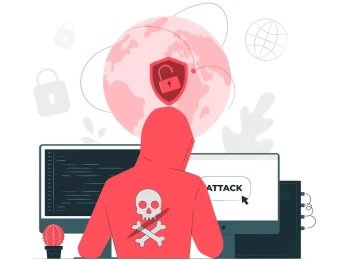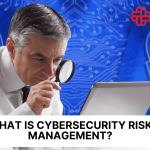- Table of Contents
- Introduction
- Understanding Cybersecurity and Risk
- Frameworks of Cybersecurity
- The Risks in the Cyber World
- Cybersecurity Risk Assessment
- 1. Asset Identification:
- 2. Threat Identification:
- 3. Risk Analysis:
- 4. Risk Evaluation:
- 5. Risk Treatment:
- 6. Monitoring and Review:
- Difference Between Risk Assessment, Risk Management, and Risk Analysis
- The Importance of Cybersecurity Risk Management
- Protecting Confidentiality and Integrity
- Ensuring Availability
- Maintaining Compliance
- Preserving Reputation
- Minimising Financial Losses
- Statistics on Cybersecurity
- Challenges of Cybersecurity Risk Management
- 1. First-Party Problems
- 2. Third-Party Impacts
- 3. Cyber-Attack Sophistication
- 4. Resource Constraints
- 5. Regulatory Complexity
- 6. Legacy Systems and Infrastructure
- 7. Insider Threats
- 8. Supply Chain Vulnerabilities
- 9. Lack of Cyber Awareness
- 10. Cybersecurity Skills Gap
- Third-Party Risk Management (TPRM): Challenges and Best Practices
- 1. Vendor Assessment:
- 3. Data Privacy and Compliance:
- 4. Contractual Agreements:
- 5. Continuous Monitoring:
- 6. Incident Response:
- 10 Tips for Cybersecurity Risk Management
- 1. Prioritise Risk Management
- 2. Implement Multi-Layered Defences
- 3. Educate and Train Employees
- 4. Patch and Update Systems Regularly
- 5. Enforce Strong Password Policies
- 6. Conduct Regular Risk Assessments
- 7. Establish Incident Response Plans
- 8. Monitor and Audit Systems
- 9. Collaborate with Stakeholders
- 10. Stay Informed and Adaptive
- In Conclusion
Introduction
In a world driven by technology and digital connectivity, cybersecurity is the bulwark against many threats lurking in the virtual shadows. As our reliance on digital infrastructure deepens, so do its associated risks. From data breaches to sophisticated cyber-attacks, the landscape of cyber threats is ever-evolving, necessitating a proactive and strategic approach to manage these risks effectively. In this blog post, we delve into the realm of cybersecurity, exploring its frameworks, the intricacies of risk assessment, the importance of risk management, and the challenges posed by cybersecurity in today's informational age.
Understanding Cybersecurity and Risk
At its core, cybersecurity refers to the practice of protecting systems, networks, and data from digital threats. These threats can encompass various malicious activities, including hacking, malware, phishing, and ransomware attacks. Cybersecurity is about safeguarding the confidentiality, integrity, and availability of information in the digital realm.
In cybersecurity, risk pertains to the likelihood of a cyber threat exploiting vulnerabilities in a system or network, leading to adverse consequences such as data breaches, financial losses, or reputational damage. Effectively managing cybersecurity risk involves identifying, assessing, and mitigating potential threats to minimise their impact on an organisation.
Frameworks of Cybersecurity
Various frameworks have been developed to provide guidance on cybersecurity and risk management. These frameworks offer structured approaches to assessing and addressing cybersecurity risks tailored to organisations' needs and requirements. Some prominent frameworks include:
NIST Cybersecurity Framework:
Developed by the National Institute of Standards and Technology (NIST), this framework provides robust guidelines, standards, and best practices for managing cybersecurity risk across critical infrastructure sectors. It consists of five core functions: Identify, Protect, Detect, Respond, and Recover. Organisations can use these functions to develop a comprehensive cybersecurity strategy tailored to their unique risk profile and operational requirements.
Risk Management Framework (RMF):
Established by NIST, the RMF offers a systematic and disciplined approach to managing cybersecurity risk within federal information systems. It comprises six steps: Prepare, Categorize, Select, Implement, Assess, and Authorise. By following these steps, organisations can identify, assess, and prioritise cybersecurity controls to protect their information systems and data from various threats.
Department of Defense RMF:
This framework, tailored for the defence sector, outlines processes and procedures for assessing and mitigating cybersecurity risks associated with Department of Defense (DoD) information systems. It aligns with the broader RMF framework but incorporates additional requirements and considerations for defence-related missions and operations.
ISO 31000:
The International Organization for Standardization (ISO) 31000 standard provides principles and guidelines for risk management, including cybersecurity risk. It emphasises a holistic approach to risk management, focusing on identifying, analysing, and evaluating risks, as well as implementing controls and monitoring their effectiveness. ISO 31000 applies to organisations of all sizes and industries, providing a flexible framework for managing cybersecurity risks in diverse environments.
Factor Analysis of Information Risk (FAIR):
FAIR is a methodology for quantifying and analysing information security risk in financial terms. It enables organisations to prioritise cybersecurity investments and resources based on the potential impact of risks on their business objectives. By quantifying cybersecurity risk in monetary terms, FAIR provides a common language for stakeholders to communicate and make informed decisions about risk management.
These frameworks offer organisations invaluable guidance and tools to develop and implement effective cybersecurity strategies. By adopting a framework-aligned approach to cybersecurity risk management, organisations can enhance their resilience to cyber threats and safeguard their critical assets and operations in today's increasingly digital and interconnected world.
The Risks in the Cyber World
In the vast and interconnected landscape of the cyber world, organisations and individuals face an ever-expanding array of risks that threaten the confidentiality, integrity, and availability of their digital assets. Understanding these risks is paramount to developing effective cybersecurity strategies. Let's explore some of the most prevalent risks in the cyber realm:
Data Breaches:
Data breaches represent one of the most pervasive and damaging cyber threats. These incidents involve unauthorised access to sensitive information, such as personal data, financial records, or intellectual property, resulting in theft, disclosure, or manipulation. Data breaches can have far-reaching consequences, including financial losses, reputational damage, and legal liabilities for affected organisations and individuals.
Malware Attacks:
Malicious software, or malware, poses a significant threat to organisations' digital infrastructure and operations. Malware encompasses various malicious programs designed to infiltrate systems, steal data, or disrupt operations. Common types of malware include viruses, worms, Trojans, ransomware, and spyware. These malicious programs exploit software, networks, and human behaviour vulnerabilities to compromise systems, data integrity, and confidentiality.
Phishing:
Phishing attacks are a form of social engineering in which cybercriminals impersonate legitimate entities to deceive individuals into divulging sensitive information, such as login credentials, financial details, or personal data. Phishing attacks often involve deceptive emails, text messages, or websites designed to trick recipients into clicking on malicious links, downloading malware-infected attachments, or providing confidential information. Phishing attacks can have devastating consequences, including identity theft, financial fraud, and unauthorised access to sensitive information.
Ransomware:
Ransomware attacks pose a growing threat to organisations of all sizes and industries. These attacks involve the deployment of malware that encrypts data on infected systems, rendering it inaccessible to legitimate users. Cybercriminals then demand a ransom payment, typically in cryptocurrency, to decrypt the data and restore access. Ransomware attacks can cause severe disruptions to business operations, data loss, and financial losses for affected organisations.
Denial-of-Service (DoS) Attacks:
Denial-of-Service (DoS) attacks aim to disrupt the availability of systems, networks, or services by overwhelming them with excessive traffic or requests. These attacks can render websites inaccessible, disrupt online services, or degrade network performance, impacting the ability of organisations to conduct business and serve their customers. Distributed Denial-of-Service (DDoS) attacks, which involve coordinated efforts from multiple sources, pose an even greater threat, amplifying the scale and impact of the attack.
These are just a few examples of the myriad risks that organisations and individuals face in the cyber world. From sophisticated cyber-attacks launched by nation-states and cybercriminal syndicates to opportunistic malware infections and social engineering scams, the threat landscape constantly evolves and adapts to exploit technology, processes, and human behaviour vulnerabilities.
Faced with these risks, organisations must adopt a proactive and multifaceted approach to cybersecurity, encompassing robust technical controls, comprehensive security policies and procedures, ongoing employee training and awareness programs, and collaboration with industry partners and law enforcement agencies. By understanding the nature of cyber risks and implementing effective countermeasures, organisations can enhance their resilience to cyber threats and safeguard their critical assets in today's digital age.
Cybersecurity Risk Assessment
Cybersecurity risk assessment is a systematic process of identifying, analysing, and evaluating potential cybersecurity risks to an organisation's assets, systems, and operations. It involves assessing the likelihood and impact of various threats and vulnerabilities and identifying controls and safeguards to mitigate these risks effectively.
The process of cybersecurity risk assessment typically involves the following steps:
1. Asset Identification:
Cybersecurity risk assessment begins with identifying and cataloguing the organisation's critical assets. These assets encompass tangible elements like hardware and software and intangible assets such as data, intellectual property, and reputation. By understanding the value and importance of each asset, organisations can prioritise their efforts and allocate resources effectively.
2. Threat Identification:
With assets identified, the next step is identifying potential cybersecurity threats and vulnerabilities that could jeopardise their security and integrity. Threats can emanate from various sources, including external actors such as hackers, cybercriminal syndicates, and nation-state actors and internal factors such as disgruntled employees, accidental data leaks, or system misconfigurations. By comprehensively assessing the threat landscape, organisations can better understand their exposure and develop targeted mitigation strategies.
3. Risk Analysis:
Risk analysis lies at the heart of cybersecurity risk assessment, systematically evaluating identified threats' likelihood and potential impact. This process considers factors such as the probability of a threat occurring, the severity of its consequences, and the organisation's susceptibility and preparedness to withstand its impact. By quantifying and qualifying risks, organisations can prioritise their responses and allocate resources judiciously.
4. Risk Evaluation:
Building upon risk analysis, risk evaluation involves assessing the level of risk posed by identified threats and vulnerabilities. This evaluation considers the organisation's risk appetite, tolerance, and mitigation capabilities, determining whether the residual risk falls within acceptable thresholds or requires further action. Organisations can make informed decisions about resource allocation and risk management strategies by establishing clear risk acceptance and mitigation criteria.
5. Risk Treatment:
Armed with insights from risk evaluation, organisations embark on the journey of risk treatment, developing and implementing mitigation strategies and controls to reduce the likelihood and impact of identified risks. These strategies may encompass a diverse array of measures, including technical controls such as firewalls, encryption, and intrusion detection systems, as well as procedural controls such as security policies, training programs, and incident response plans. By addressing vulnerabilities and fortifying defences, organisations can enhance their resilience to cyber threats and minimise their exposure to potential harm.
6. Monitoring and Review:
The journey of cybersecurity risk assessment is not a one-time endeavour but rather a continuous process of vigilance and adaptation. Organisations must establish mechanisms for monitoring and reviewing the effectiveness of their risk mitigation measures, updating them as necessary to address emerging threats and vulnerabilities. By maintaining a proactive stance and remaining attuned to changes in the threat landscape, organisations can stay one step ahead of cyber adversaries and safeguard their critical assets in an ever-evolving digital environment.
In conclusion, cybersecurity risk assessment is not merely a box to be checked; it is a strategic imperative, enabling organisations to identify, analyse, and prioritise risks to their digital assets and operations effectively. By following a systematic and comprehensive approach to risk assessment, organisations can enhance their resilience to cyber threats, safeguard their critical assets, and navigate the complexities of the cyber landscape with confidence and clarity.
Difference Between Risk Assessment, Risk Management, and Risk Analysis
While often used interchangeably, risk assessment, risk management, and risk analysis are distinct components of the broader cybersecurity risk management process:
- Risk Assessment: The process of identifying, analysing, and evaluating potential cybersecurity risks to an organisation's assets and operations.
- Risk Management: The process of identifying, assessing, prioritising, and mitigating cybersecurity risks through the implementation of appropriate controls and safeguards.
- Risk Analysis: The process of analysing the likelihood and potential impact of identified cybersecurity risks, including factors such as probability, severity, and potential loss.
Together, these components form the foundation of a comprehensive cybersecurity risk management strategy, enabling organisations to effectively identify, assess, and mitigate potential threats and vulnerabilities.
The Importance of Cybersecurity Risk Management
Effective cybersecurity risk management is essential for organisations to safeguard their critical assets, maintain the trust and confidence of stakeholders, and mitigate the potential impact of cyber threats. By proactively identifying and addressing cybersecurity risks, organisations can:
Protecting Confidentiality and Integrity
At the heart of cybersecurity risk management lies the imperative to safeguard the confidentiality and integrity of sensitive information. Whether proprietary business data, personal customer information, or critical intellectual property, organisations must ensure that their digital assets remain shielded from prying eyes and malicious actors. By implementing robust cybersecurity measures, such as encryption, access controls, and data loss prevention mechanisms, organisations can prevent unauthorised access, manipulation, or disclosure of sensitive information, preserving its confidentiality and integrity.
Ensuring Availability
In a world where downtime is not an option, ensuring the availability and reliability of systems, networks, and services is paramount. Cybersecurity risk management plays a crucial role in mitigating the risk of disruptions and outages caused by cyber-attacks, technical failures, or natural disasters. By implementing resilience measures such as redundancy, failover mechanisms, and disaster recovery plans, organisations can minimise the impact of disruptions and ensure continuous access to critical resources and services for their stakeholders.
Maintaining Compliance
With the proliferation of data privacy regulations, industry standards, and compliance requirements, maintaining compliance has become a top priority for organisations across all sectors. Cybersecurity risk management enables organisations to adhere to regulatory mandates and industry best practices governing cybersecurity and data protection. By conducting regular risk assessments, implementing appropriate controls, and documenting compliance efforts, organisations can demonstrate their commitment to data security and regulatory compliance, thereby mitigating the risk of legal liabilities, fines, and reputational damage.
Preserving Reputation
In today's hyperconnected world, a single cybersecurity incident can have far-reaching consequences for an organisation's reputation and brand image. Cybersecurity risk management is crucial in preserving trust and confidence among stakeholders, including customers, partners, investors, and the public. By proactively addressing cybersecurity risks and implementing robust security measures, organisations can mitigate the risk of security breaches, data leaks, and other cyber incidents that could tarnish their reputation and erode trust.
Minimising Financial Losses
Cybersecurity incidents can have significant financial implications for organisations, ranging from remediation costs and legal liabilities to lost revenue and market share. Cybersecurity risk management helps organisations minimise financial losses by identifying, assessing, and mitigating potential risks before they escalate into a full-blown crisis. By investing in cybersecurity controls, training programs, and incident response capabilities, organisations can reduce the likelihood and impact of cyber incidents, thereby protecting their bottom line and preserving shareholder value.
Cybersecurity risk management is not just about protecting digital assets; it's about safeguarding the very fabric of trust and confidence that underpins our digital society. By adopting a proactive and strategic approach to cybersecurity risk management, organisations can navigate the complexities of the digital landscape with confidence, resilience, and peace of mind.
Statistics on Cybersecurity
According to findings from the Flexera 2022 Tech Spend Pulse report, a substantial 71% of companies foresee an increase in their annual IT budgets. This begs the question: How do they intend to allocate these additional funds? The data indicates that 74% prioritise digital transformation initiatives, 73% are earmarking resources for cybersecurity enhancements, and 65% want to transition to cloud-based infrastructure.
Challenges of Cybersecurity Risk Management
Despite its importance, cybersecurity risk management presents numerous challenges for organisations, including:
1. First-Party Problems
One of the foremost challenges in cybersecurity risk management arises from internal vulnerabilities and weaknesses within organisations themselves. Despite the best intentions and investments in security technologies, human error, negligence, and insider threats remain significant risk factors. From employees falling victim to phishing scams to inadvertently exposing sensitive information through insecure practices, organisations must address the human element of cybersecurity to mitigate first-party risks effectively.
As highlighted in the IBM Security X-Force Threat Intelligence Index 2023, as cited in a LinkedIn article , cyber attackers are ramping up both their pace and complexity to infiltrate first-party data. For instance, in 2020, the average time for ransomware deployment was 9.5 days. However, by the following year, this window had shrunk significantly to a mere 3.85 days, showcasing a concerning trend toward increased efficiency among malicious actors. Additionally, only 26% of attacks employed known exploits, signalling a shift toward more innovative and unconventional methods by attackers, challenging conventional defence mechanisms.
2. Third-Party Impacts
In an increasingly interconnected business ecosystem, organisations are vulnerable to their own internal risks and the risks posed by third-party vendors, suppliers, and partners. Security breaches or lapses in third-party systems can have cascading effects, leading to data breaches, service disruptions, and reputational damage for organisations. Managing third-party risks requires comprehensive due diligence, contractual agreements, and ongoing monitoring to ensure vendors adhere to stringent security standards and practices.
3. Cyber-Attack Sophistication
The landscape of cyber threats constantly evolves, with adversaries employing increasingly sophisticated tactics, techniques, and procedures to circumvent traditional security defences. From advanced persistent threats (APTs) to zero-day exploits, organisations face a barrage of cyber-attacks that are difficult to detect and mitigate using conventional security measures. Combating cyber-attack sophistication requires organisations to adopt a proactive and adaptive approach to cybersecurity, leveraging advanced threat intelligence, analytics, and machine learning to stay ahead of adversaries.
4. Resource Constraints
Despite the growing recognition of cybersecurity's importance, many organisations struggle with limited budgets, expertise, and resources for effectively managing cybersecurity risks. Balancing competing priorities and allocating resources judiciously is a perennial challenge, particularly for small and medium-sized enterprises (SMEs) with limited financial means. Organisations must prioritise cybersecurity investments based on risk exposure and potential impact to overcome resource constraints, leveraging cost-effective solutions and outsourcing where necessary to augment internal capabilities.
5. Regulatory Complexity
The cybersecurity regulatory landscape is a tangled web of laws, regulations, and industry standards that vary by jurisdiction and industry. Navigating this regulatory complexity poses a significant challenge for organisations, particularly multinational corporations operating in multiple jurisdictions. Compliance with diverse regulatory requirements requires a comprehensive understanding of applicable laws and regulations and robust governance, risk, and compliance (GRC) frameworks to ensure adherence to regulatory mandates.
6. Legacy Systems and Infrastructure
Many organisations grapple with the presence of outdated and legacy systems and infrastructure that are vulnerable to cyber threats due to a lack of security updates and patches. Legacy systems pose inherent risks, as they may lack the security features and capabilities necessary to withstand modern cyber-attacks. Securing legacy systems requires a careful balancing act, weighing the need for system functionality against the security risks they pose and implementing compensating controls and mitigation strategies where necessary.
7. Insider Threats
Insider threats, whether malicious or unintentional, present a significant cybersecurity risk for organisations. Trusted insiders, including employees, contractors, and business partners, may abuse their privileged access to systems and data or inadvertently expose sensitive information through negligent or careless behaviour. Detecting and mitigating insider threats requires a combination of technical controls, user monitoring, and employee awareness training to foster a culture of security and vigilance within the organisation.
8. Supply Chain Vulnerabilities
The interconnected nature of supply chains exposes organisations to cybersecurity risks originating from upstream or downstream partners and vendors. Supply chain vulnerabilities, such as counterfeit components, insecure software, and untrusted suppliers, can compromise the integrity and security of products and services, leading to potential supply chain disruptions and reputational damage. Managing supply chain risks requires organisations to conduct thorough risk assessments, establish supplier security requirements, and implement robust supply chain management practices to ensure the security and resilience of their supply chain ecosystems.
9. Lack of Cyber Awareness
Despite the growing awareness of cybersecurity risks, many organisations still struggle with a lack of cyber awareness among employees, stakeholders, and the broader community. Human error and ignorance remain significant contributors to cybersecurity incidents, as individuals inadvertently fall victim to phishing scams, click on malicious links, or fail to follow security best practices. Enhancing cyber awareness requires ongoing education and training programs that empower individuals to recognize and mitigate cyber threats effectively, fostering a culture of security and accountability within the organisation.
10. Cybersecurity Skills Gap
The cybersecurity skills gap is a pervasive challenge that hampers organisations' ability to manage cybersecurity risks effectively. The demand for skilled cybersecurity professionals far outstrips the supply, leaving many organisations struggling to recruit, train, and retain qualified talent. Bridging the cybersecurity skills gap requires a multifaceted approach, including investments in education and training programs, workforce development initiatives, and partnerships with academic institutions and industry organisations to cultivate the next generation of cybersecurity professionals.
In conclusion, navigating the challenges of cybersecurity risk management requires organisations to adopt a proactive and multifaceted approach that addresses the diverse array of threats and vulnerabilities they face. By understanding the intricacies of cybersecurity risk management and implementing effective strategies and controls, organisations can enhance their resilience to cyber threats and safeguard their critical assets and operations in today's dynamic and interconnected digital landscape.
Addressing these challenges requires a multifaceted and proactive approach to cybersecurity risk management, encompassing technology, processes, and people.
Table 1: Cybersecurity metrics every company should measure
Metric | Description | Importance |
Phishing Awareness Rate | Measure employees' ability to identify | Indicate effectiveness of training efforts |
Patching Compliance | Track percentage of systems updated | Prevent exploitation of known vulnerabilities |
Incident Response Time | Measure time taken to detect and respond | Minimise impact of cybersecurity incidents |
User Access Monitoring | Monitor user activity for suspicious behaviour | Identify potential insider threats |
Firewall Rule Effectiveness | Assess efficacy of firewall configurations | Prevent unauthorised access and attacks |
Third-Party Risk Management (TPRM): Challenges and Best Practices
Third-party risk management (TPRM) is a critical component of cybersecurity risk management, given the interconnected nature of modern business ecosystems. However, managing third-party risks presents its own set of challenges, including:
1. Vendor Assessment:
Assessing the cybersecurity posture and practices of third-party vendors, suppliers, and partners to ensure they meet the organisation's security standards and requirements.
2. Supply Chain Complexity:
Managing the complexity and interdependencies of supply chains can involve numerous third-party vendors and service providers.
3. Data Privacy and Compliance:
Ensuring third-party vendors comply with applicable data privacy regulations and industry standards, particularly when handling sensitive or confidential information.
4. Contractual Agreements:
Establish clear contractual and service-level agreements (SLAs) with third-party vendors to define security responsibilities, obligations, and liabilities.
5. Continuous Monitoring:
Implementing continuous monitoring and oversight mechanisms to track and assess the security posture of third-party vendors over time.
6. Incident Response:
Developing and implementing incident response plans and procedures to address cybersecurity incidents involving third-party vendors and mitigate their impact on the organisation.
Despite these challenges, organisations can adopt best practices to enhance their TPRM efforts, including:
Risk-Based Approach:
Prioritise third-party risks based on their potential impact on the organisation's operations and objectives.
Collaborative Engagement:
Foster collaboration and communication with third-party vendors to promote transparency and accountability in cybersecurity risk management.
Due Diligence:
Conduct thorough due diligence and vetting of third-party vendors before engaging in business relationships or partnerships.
Continuous Assessment:
Implement ongoing assessment and monitoring of third-party vendors' cybersecurity practices and controls to identify and address emerging risks.
Contractual Protections:
Incorporate cybersecurity requirements and provisions into contractual agreements with third-party vendors to mitigate risks and liabilities.
By adopting these best practices, organisations can strengthen their TPRM capabilities and effectively manage third-party cybersecurity risks in an increasingly interconnected business environment.
10 Tips for Cybersecurity Risk Management
In conclusion, here are ten actionable tips for effective cybersecurity risk management:
1. Prioritise Risk Management
Identify and prioritise cybersecurity risks based on their potential impact on the organisation's operations and objectives. Focus resources and efforts on addressing high-priority risks that pose the greatest threat to critical assets and operations.
2. Implement Multi-Layered Defences
Deploy multiple layers of defence, including firewalls, antivirus software, intrusion detection systems, and encryption, to protect against diverse cyber threats. Adopt a defence-in-depth approach that combines technical, administrative, and physical controls to create overlapping layers of security.
3. Educate and Train Employees
Provide cybersecurity awareness training and education to employees to enhance their understanding of cyber threats and best practices for mitigating risks. Empower employees to recognize and respond to phishing scams, malware infections, and other cyber threats effectively.
4. Patch and Update Systems Regularly
Keep systems, software, and applications up to date with the latest security patches and updates to address known vulnerabilities. Implement a robust patch management process that ensures timely deployment of patches and updates across the organisation's IT infrastructure.
5. Enforce Strong Password Policies
Implement strong password policies, including regular password changes, complexity requirements, and multi-factor authentication, to protect against unauthorised access. Encourage employees to use unique, complex passwords for each account and avoid using easily guessable passwords.
6. Conduct Regular Risk Assessments
Conduct regular cybersecurity risk assessments to identify, analyse, and evaluate potential threats and vulnerabilities to the organisation's assets and operations. Use risk assessment findings to prioritise risks, allocate resources effectively, and inform decision-making about risk management strategies.
7. Establish Incident Response Plans
Develop and implement incident response plans and procedures to effectively respond to cybersecurity incidents and minimise their impact on the organisation. Test incident response plans regularly through tabletop exercises and simulations to ensure readiness and effectiveness.
8. Monitor and Audit Systems
Implement continuous monitoring and auditing of systems, networks, and activities to promptly detect and respond to suspicious or anomalous behaviour. Use security information and event management (SIEM) tools to aggregate and analyse security logs for signs of potential security incidents. Here are some examples of SIEM tools you could leverage:
9. Collaborate with Stakeholders
Foster collaboration and communication with stakeholders, including employees, vendors, partners, and regulators, to promote a culture of cybersecurity awareness and accountability. Engage stakeholders in cybersecurity training, awareness campaigns, and collaborative initiatives to enhance organisational cyber resilience.
10. Stay Informed and Adaptive
Stay informed about emerging cyber threats, trends, and best practices in cybersecurity risk management, and adapt strategies and controls accordingly to mitigate evolving risks. Engage with industry peers, participate in cybersecurity forums and conferences, and leverage threat intelligence sources to stay ahead of cyber adversaries.
By following these tips and adopting a proactive and holistic approach to cybersecurity risk management, organisations can enhance their resilience to cyber threats and safeguard their critical assets in today's digital age.
In Conclusion
Cybersecurity risk management is not merely a technical endeavour but a strategic imperative that requires a comprehensive and proactive approach to safeguarding against cyber threats. By prioritising risk management, implementing multi-layered defences, educating employees, and conducting regular risk assessments, organisations can enhance their cyber resilience and protect against the ever-evolving threat landscape. Collaboration with stakeholders, continuous monitoring, and staying informed about emerging threats are also essential elements of effective cybersecurity risk management.
Additionally, organisations can benefit from specialised training programs such as " Cyber Security, Legal Risk Management & Governance Strategies ." This course offers comprehensive insights into cybersecurity risk management best practices, legal compliance requirements, and governance strategies, equipping participants with the knowledge and skills to navigate the complex cybersecurity risk landscape effectively. With practical guidance and real-world case studies, this course empowers organisations to strengthen their cybersecurity posture and mitigate risks proactively. Take the next step towards enhancing your cybersecurity resilience by enrolling in our course today.
























